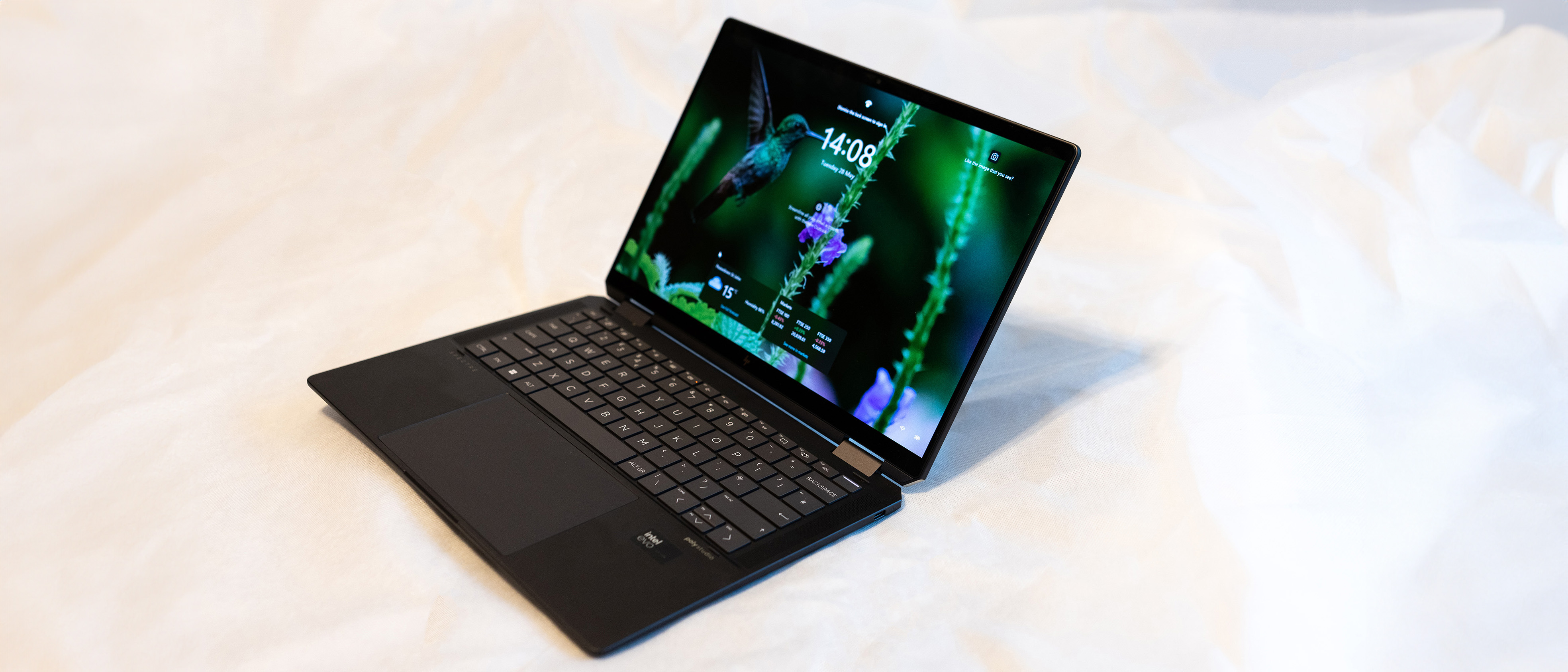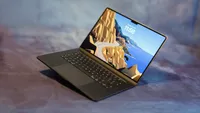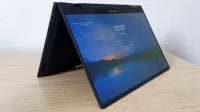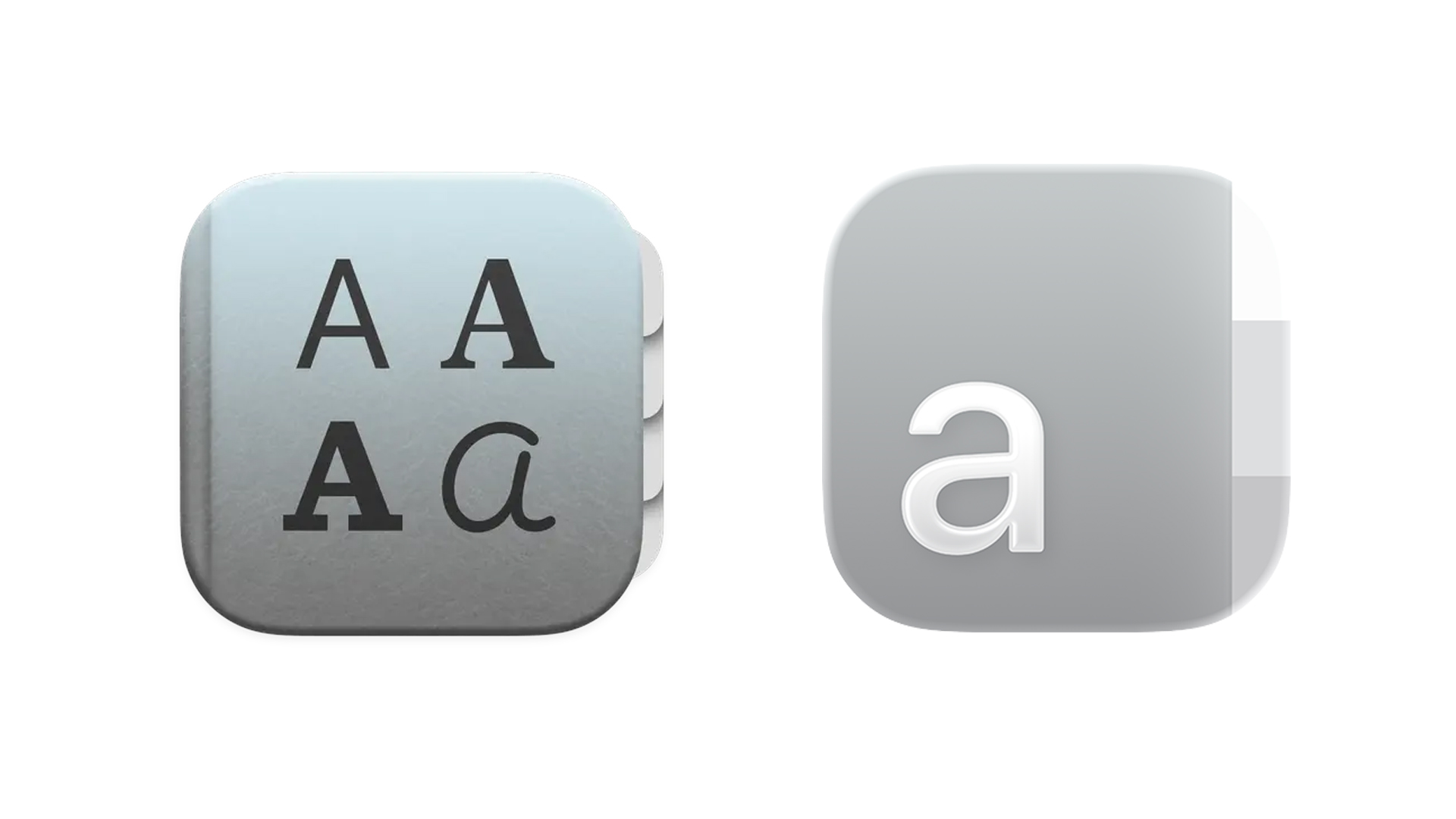Our Verdict
The HP Spectre x360 14 (2024) 2-in-1 is a classy operator, especially in the high-spec trim we’re reviewing here. The OLED touchscreen is responsive, the internal components have plenty of grunt, and there's a stylus in the box rather than being a costly extra. There are some excellent design touches in an otherwise conservative chassis, and despite a noticeable fan noise, it’s a superb coming together of technologies that has become the convertible laptop to beat.
For
- Great screen
- Responsive in use
- Stylus in the box
Against
- No discrete GPU
- Heavy as a tablet
Why you can trust Creative Bloq
Upgraded for 2024, the Spectre x360 14 is a touchscreen-enabled 2-in-1 laptop with a clever hinge that allows it to fold back on itself and become a pseudo-tablet. It’s equipped with Intel’s latest mobile processor (at the time of writing, anyway) and plenty of RAM, making it ideal for business use and travelling. Its touchscreen means you can use it as a drawing tablet or for natural writing input using the included stylus, and you can always set it up in tent mode for watching movies in bed.
Thanks to its high spec, the 2024 Spectre x360 14 is a pretty good bet to join our best touchscreen laptops list, but its reliance on the processor’s Arc-integrated graphics means it will lose out to similarly priced laptops with a dedicated GPU in pixel-heavy applications.
HP Spectre x360 14 (2024) review: Key specifications
CPU | Intel Core Ultra 7 155H |
GPU | Intel Arc integrated |
RAM | 32GB |
Screen | 14in HDR OLED |
Resolution | 2880 x 1800 |
Refresh rate | 120Hz |
Colour coverage (stated) | 100% P3 |
Storage | 2TB SSD |
Connectivity | Wi-Fi 7, Bluetooth 5.4, 1x USB Type-A 10Gbps, 2x Thunderbolt 4, 1x 3.5mm headset port |
Dimensions | 31.37 x 22.04 x 1.69 cm |
Weight | 1.44kg |

Design and build
The hinge between a laptop’s screen and its body is often a weak point, especially if that hinge is designed to fold all the way back on itself. It’s good to see that the Spectre’s hinge attaches in two places using broad connectors, and displays no play or wobble. It smoothly folds in either direction, and doesn’t open up when it’s closed despite the lack of a latch. It’s a little bit heavy to use as a handheld tablet for long periods, but it’s a nice option to have. Leaning it on a desk in tent mode to use the stylus is more successful.
There are some other extremely nice design notes - the way the corners are filed off at the point the screen and body join, and one of the Thunderbolt ports has been placed on the angled surface to create an accessible charging port or hub connection that prevents the need for a cable going directly into the side of the laptop. On the other corner sits the headset port, while the lone USB-A is a slimline design that you’ll need to open up before you can use it. It snaps shut again using a spring, so won’t be left gaping to catch on things.
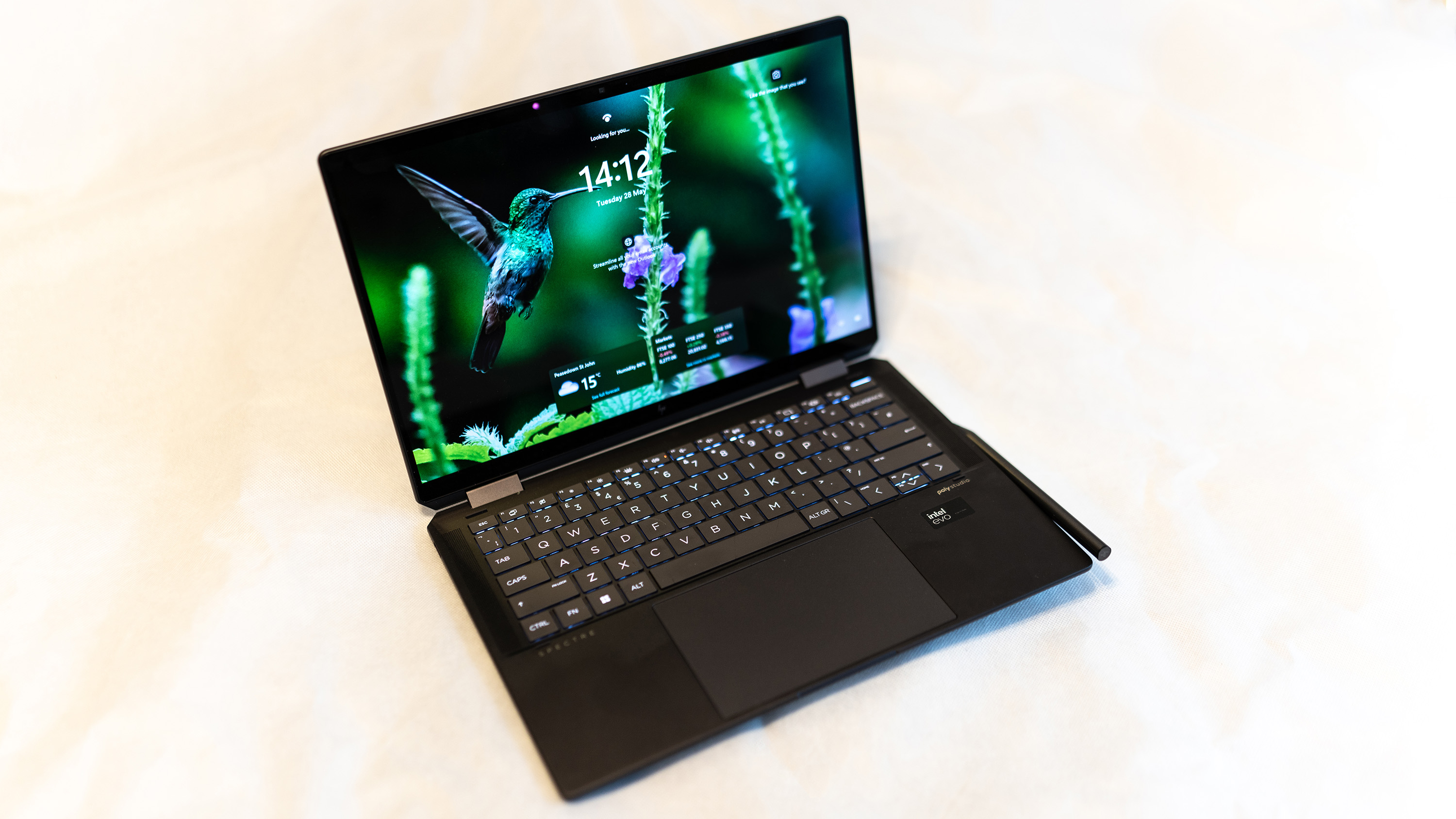
Elsewhere, there's some conventional laptop design on display. As a 14-inch model, it tries to combine the best bits of a larger machine with the compactness of a smaller one, and it achieves this by dropping the numpad from the keyboard to allow larger keys, and squeezing two speaker grilles down the sides.
It’s certainly a good-looking machine, with the HP branding kept to a minimum and a classy white backlight behind the keys. Being made mainly of metal, there's no flex to the chassis, and you can safely hold it by one corner without worrying about preventing the trackpad from working.
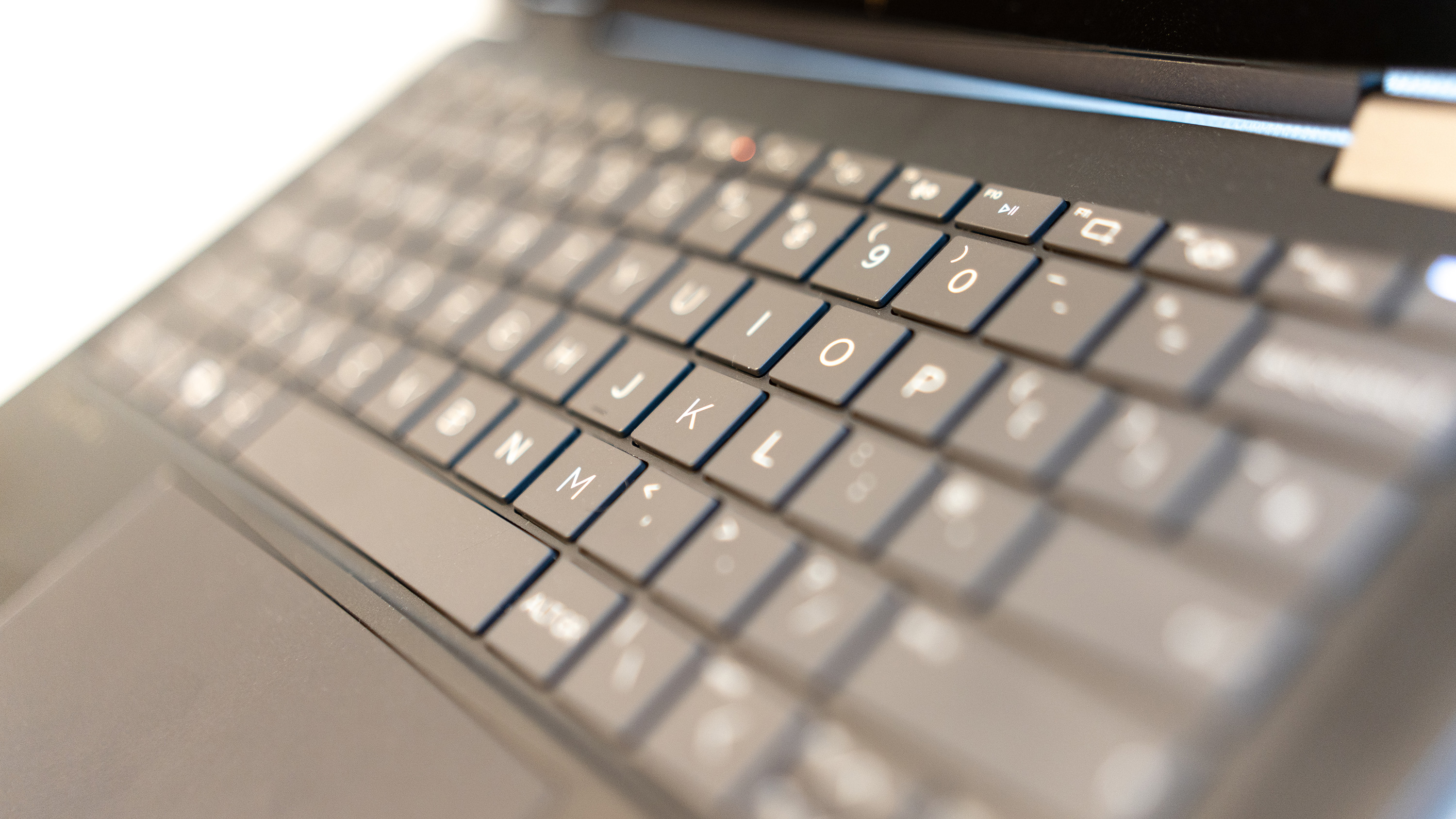
The keyboard is an odd one, with a shouty all-caps font on keys like, appropriately, CAPS LOCK. Its keys are extremely square, but a good size thanks to the omission of a numpad, and don’t have a great deal of travel due to the thinness of the chassis. The Enter key is slimline, losing its height to a large # key (the campaign to start calling it an ‘octothorpe’ again starts here) that will be useful to coders and social media stars alike but can be easily tapped if you’re used to using the upper part of the traditional Enter. The trackpad is large and has a pleasant texture that sets it apart from the surrounding metal.
Daily design news, reviews, how-tos and more, as picked by the editors.
Features
The screen of a convertible laptop is one of its most important features, and by choosing a multitouch OLED with an anti-reflective Gorilla Glass coating HP has made an excellent decision for the Spectre x360. It’s certainly bright enough and has the deep blacks and vibrant colours you’d expect from an OLED.
The stylus, otherwise known as an HP Rechargeable MPP2.0 Tilt Pen, magnetically attaches to the side of the chassis. It comes with a couple of spare tips, and with its flattened edge and pair of low-profile buttons feels good in the hand. It’s great to see one of these tools included in the box instead of being an optional add-on you pay more for, as it makes it feel like an integral part of the experience, as well as not being a hidden extra cost.
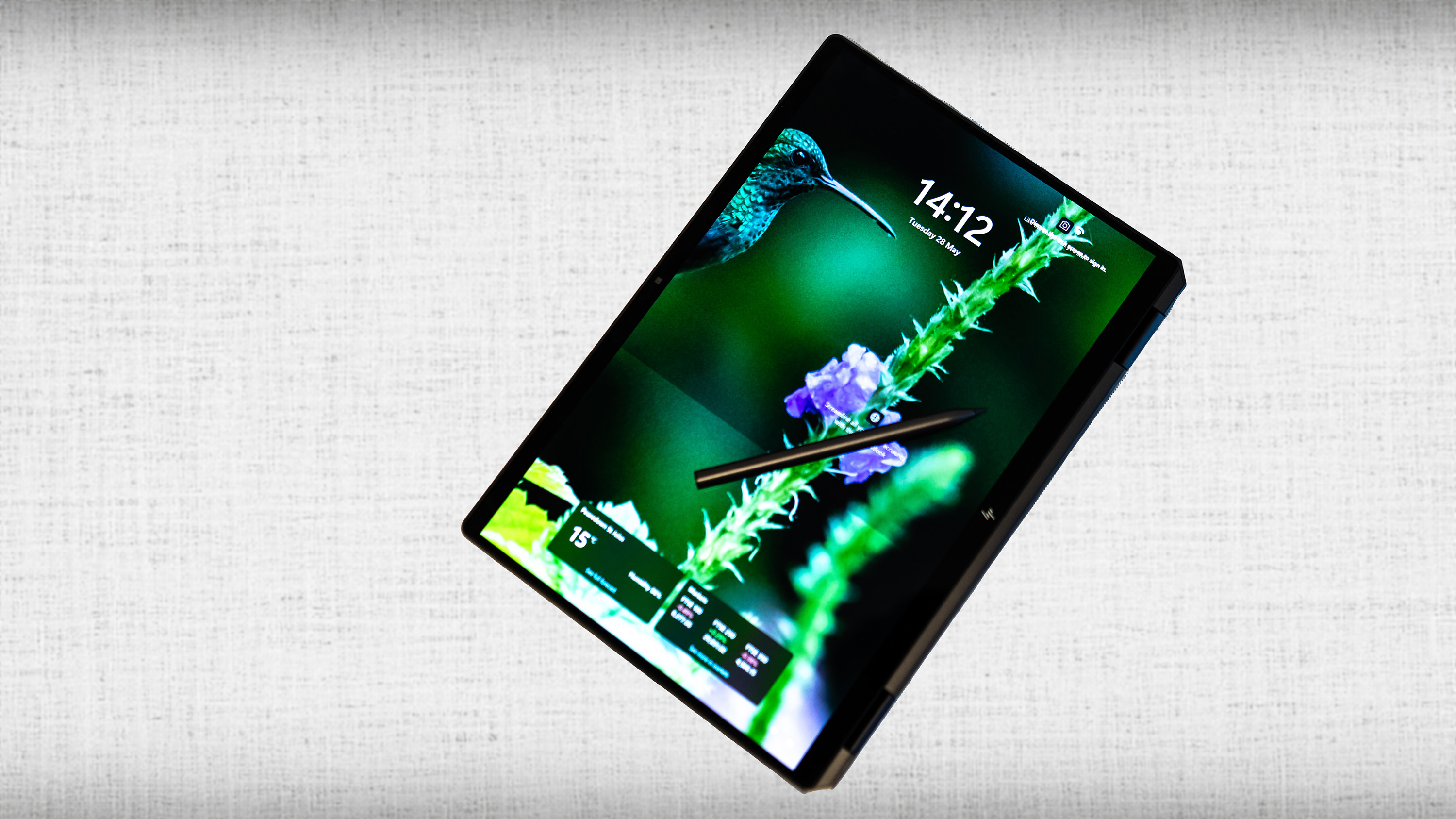
If you need to connect to external devices, the port selection may seem limiting. There's a single USB-A, though it’s a fast 10Gbps model, and a pair of Thunderbolt 4s that are both capable of charging the device and connecting to an external monitor. There's no Ethernet port, though Wi-Fi 7 is provided for a fast wireless connection, and if you intend to use it on a desk with a lot of wired peripherals some sort of dock may be in order. This said, it’s good to see all these fast ports on a machine, and the choice of USB-C Thunderbolt and the low-profile USB-A means they don’t impinge on the slim design of the laptop.
A 65W power adapter comes in the box, and we found it was reluctant to charge, even slowly, from lower-wattage tablet and phone chargers.
Benchmark scores
Benchmark scores | Header Cell - Column 1 |
|---|---|
Cinebench 2024 | Multicore: 544; Single core: 99; CPU: not compatible |
Geekbench 6 | Multicore: 12423; Single core: 2356; GPU: 33405 |
PC Mark 10 | Test: 6565; Battery: 8h 33m |
3D Mark | Time Spy: 3306; Night Raid: 24297 |
Pugetbench Photoshop | 6045 |
Handbrake | 7min 21sec |
Performance
The model sent to Creative Bloq for review is the top of the range, with an Intel Core Ultra 7 processor, 32GB of RAM and a 2TB SSD. This is an excellent spec, only possibly let down by its use of the Intel Arc integrated graphics cores. That said, they’re stronger than we’ve seen in previous iterations of Intel’s chips, and should have no problem driving large screens at high resolutions. GPUs also have AI applications, and this model of the Spectre has the misfortune to be released just as the Copilot+ PCs with Snapdragon processors are beginning to loom on the horizon. Perhaps there's a reason the keyboard doesn’t feature the Windows Copilot shortcut key.
In productivity and creative applications, the processor is able to stretch its legs, and this leads to the cooling fan making itself known. It’s a 16-core chip, with six of the multi-threading performance cores that do all the hard work. These are backed by eight efficient cores, and two of the new low-power efficient cores, and these are responsible for background tasks, processing only one thread each. With a boost speed of 4.8GHz, it’s capable of sprints at up to 115W, while its resting frequency of 1.4GHz offers an increase in power efficiency, drawing as little as 28W. This is reflected in a battery life of eight and a half hours from PC Mark’s Work 3.0 benchmark, which keeps the screen on and runs office tasks and simulated video calls. If you’re allowing the Spectre to turn its screen off and slip into battery-saving mode, you might be able to squeeze more life out of a charge, but either way, it’s perfectly capable of running all day.
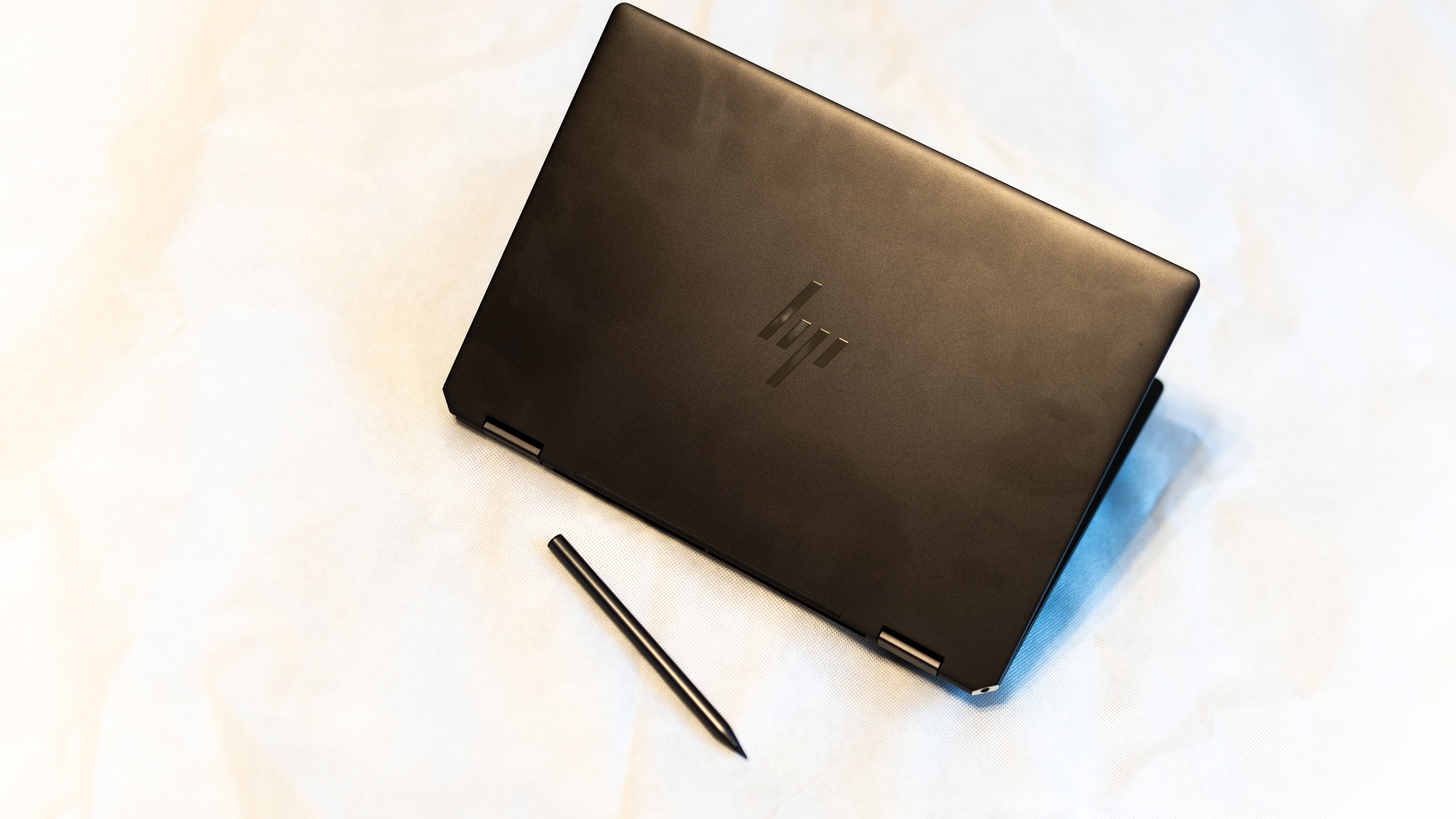
Price
Priced at £/$1,899 at the time of writing, this isn't a budget laptop, though lower-cost configurations are available if you don’t need the top-of-the-range laptop we’ve tested here. You can get a MacBook Air or the 14-inch MacBook Pro for the same sort of money, or any number of laptops from the likes of ASUS, Acer and Lenovo. What sets the Spectre apart is its 2-in-1 nature and the quality of its construction, and in use it feels as if it was worth the price.
Who is it for?
With its restrained design, the Spectre x360 will look good in an office or studio environment. The magnet to attach the stylus is strong, and it’s compact enough to fit in a bag easily, so it’s ideal for office workers wanting to take their jobs on the road, or home. In creative applications, its integrated GPU can slow down graphics-heavy tasks, but it acquits itself well in Photoshop and the pen input is solid. It also, thanks to its bright and vibrant screen, makes an excellent display for movies or games that don’t tax the GPU too much, making it a good all-rounder.
Should I buy it?
Buy it if
- You want a good productivity laptop
- That can do double duty for entertainment
- And has a touchscreen and stylus
Don't buy it if
- You need a discrete GPU chip
- You have no need for pen input
Also consider
It's not a 2-in-1, but if you’re looking for a pro laptop that can slip into your bag easily, this is still the one to beat.
This 2-in-1 from ASUS offers an OLED for less cash than the HP, albeit with slightly less powerful components.
Another ASUS OLED, this time with a separate GPU chip but no touchscreen.
out of 10
The HP Spectre x360 14 (2024) 2-in-1 is a classy operator, especially in the high-spec trim we’re reviewing here. The OLED touchscreen is responsive, the internal components have plenty of grunt, and there's a stylus in the box rather than being a costly extra. There are some excellent design touches in an otherwise conservative chassis, and despite a noticeable fan noise, it’s a superb coming together of technologies that has become the convertible laptop to beat.

Ian Evenden has been a journalist for over 20 years, starting in the days of QuarkXpress 4 and Photoshop 5. He now mainly works in Creative Cloud and Google Docs, but can always find a use for a powerful laptop or two. When not sweating over page layout or photo editing, you can find him peering at the stars or growing vegetables.
